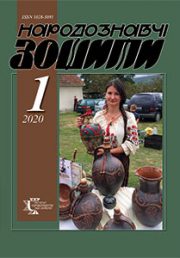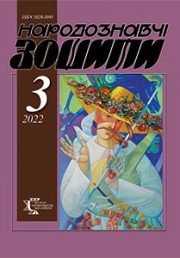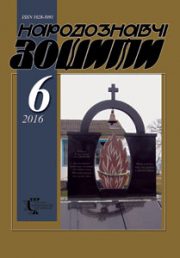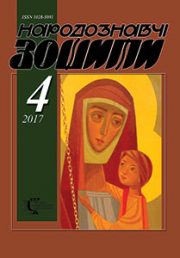The Ethnology Notebooks. 2022. № 4 (166), 961—970
UDK [76.071.1.036:7.011.2](73=161.2)”1931/2010″(092)Б.Пачовський
DOI https://doi.org/10.15407/nz2022.04.961
POLYPHONIC PLATFORM OF CREATIVE THINKING OF BORIS PACHOVSKY: IMAGE — FUNCTION — FORM
YATSIV Roman
- ORCID ID: https://orcid.org/0000-0003-1509-5367
- Doctor of Historical Sciences, Professor,
- Lviv National Academy of Arts,
- Art Wood Department,
- St. 38 V. Kubiyovych St., 79011, Lviv, Ukraine,
- Contacts: e-mail: jaciv@ukr.net
Abstract. The article examines the diverse creative heritage of the artist and designer, one of the leading representatives of the intellectual community of the Ukrainian diaspora, Borys Pachovskyi (1931—2010). His professional thinking was formed in the environment of that part of the younger generation of artists and writers who, after moving to the USA, were looking for ways to actualize Ukrainian identity in innovative artistic manifestations. The features of the artist’s formal and figurative thinking in all components of his creative heritage are revealed on the basis of extensive factual material, in particular the author’s private archives.
The relevance of the article lies in the fact that, for the first time in Ukrainian art science, the author’s work in such fields as easel graphics, graphic design and painting is considered and systematized. Special attention is paid to the work of B. Pachovsky as the art editor of the elite professional American magazine «Stereo Review». The object of the study is the array of the author’s work in all areas of creative activity (print graphics, drawing, painting, design products), and the subject is the author’s creative thinking in the aspects of artistic image, form and function.
The methodological basis of the research is scientific-biographical, scientific-reconstructive, structural-typological and formal-analytical methods. The professional qualification of artistic monuments uses the scientific-interpretive method and the cultural approach to reveal socio-historical, ethnogenetic and psychological factors of the formation of the syncretic worldview of the artist.
Keywords: fine art of the 20th century, Boris Pachovsky, modernism, graphics, woodcut, painting, graphic design, syncretism, aesthetic outlook, creative thinking, artistic image, function, author’s concept of plastic form, composition, symbolic and metaphorical content.
Received 7.08.2022
REFERENCES
- Sichinsky, V. (1955, 25 march). Young Ukrainian artists. Svoboda (Part 57). Jersey City and New York [in Ukrainian].
- Malyutsa, A. (1956, April 13). Art exhibition of young. Svoboda (Part 70). Jersey City and New York [in Ukrainian].
- Boychuk, B. (1963, June 13). The future knows no mercy. Svoboda (Part 111). Jersey City and New York [in Ukrainian].
- Clark, R. (1970). Borys Patchowsky. Stereo Review, 1, 110.
- Yatsiv, R. (2008). Boris Pachovskyi. Dzvin, 9, 149—155 [in Ukrainian].
- Pachovskyi, B., & Yatsiv, R.M. (Ed.). (2019). Notes from my life. Ideas, meanings, interpretations of fine art. Ukrainian theoretical thought of the XX-th century: Anthology. Part three (Pp. 648—649). Lviv [in Ukrainian].
- Tytla, B. (2010, October 22). In memory of Borys Pachovskyi. Svoboda (Part 43). Jersey City and New York [in Ukrainian].
- Stelmashchuk, H.G. (Ed.). (2013). Ukrainian artists in the world. Materials for the history of Ukrainian art of the 20th century. (Pp. 410—411). Lviv: Apriori [in Ukrainian].
- Novozhenets G., & Jatsiv, R. (2015). Fine art of the Ukrainian diaspora in the 1940s-1970s: diversity of artistic experience. Lviv: Calvary [in Ukrainian].







